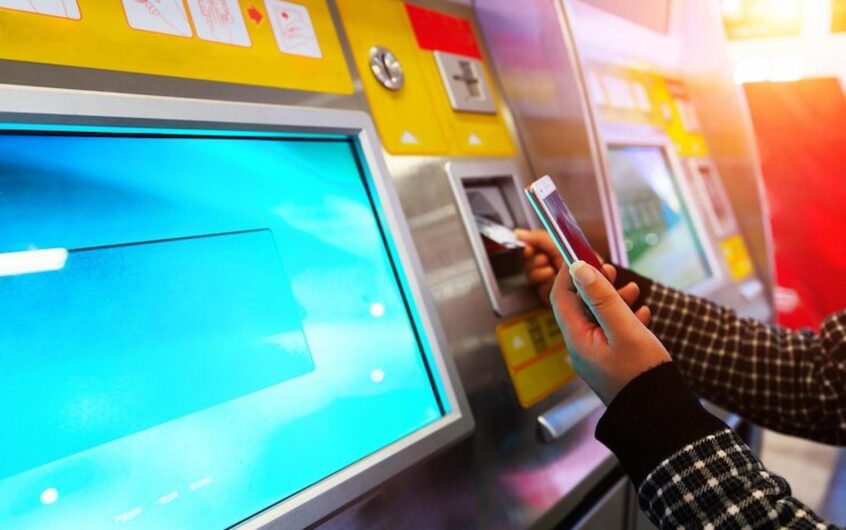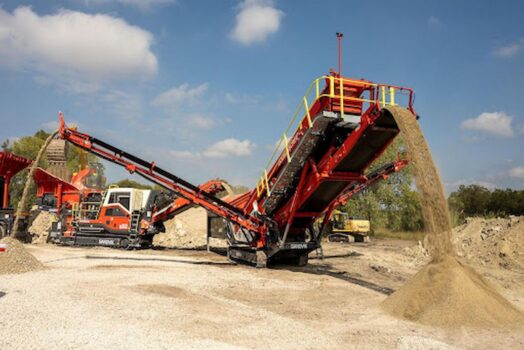Dive into our comprehensive guide to understand everything you need about ATMs. From how they work to the benefits of owning one, we’ve got you covered.
Automated Teller Machines (ATMs) have become a staple of modern banking, providing convenient access to cash and financial services 24/7. Whether you’re a consumer curious about how these machines work or a business owner considering whether to purchase an ATM, this guide will answer all your questions. We’ll explore ATMs’ fundamental aspects, benefits, and key considerations for businesses looking to invest in one. By the end of this article, you’ll have a thorough understanding of ATMs and their potential for enhancing customer convenience and boosting business revenue.
What is an ATM, and How Does it Work?
An Automated Teller Machine, commonly known as an ATM, is a specialised computer that allows bank customers to conduct financial transactions without needing a human teller. ATMs are connected to the bank’s network and can perform various functions, such as dispensing cash, accepting deposits, transferring money between accounts, and providing account information.
When a customer inserts their bank card into the ATM, the machine reads the magnetic strip or chip to access the account details. The customer then enters their Personal Identification Number (PIN) to verify their identity. Once authenticated, the customer can select the type of transaction they wish to perform. The ATM communicates with the bank’s central computer system to process the transaction and provide the requested service.
ATMs have multiple security features to protect users’ information and prevent unauthorised access. These include encryption of data transmissions, secure PIN entry pads, and anti-skimming devices. Understanding how ATMs operate can help users make informed decisions and ensure these machines’ safe and efficient use.
Benefits of Using ATMs
ATMs offer numerous advantages that make them indispensable in today’s fast-paced world. Here are some key benefits:
- Convenience: ATMs provide round-the-clock access to cash and banking services, allowing customers to perform transactions at their convenience without being limited by bank hours.
- Efficiency: ATMs reduce the need for customers to visit a bank branch, saving time and reducing queues in the banking hall. This efficiency translates to a better customer experience.
- Accessibility: ATMs are strategically located in various places, such as shopping malls, airports, and convenience stores, making it easier for people to access banking services wherever they are.
- Security: Transactions at ATMs are generally secure due to robust encryption and security protocols. Additionally, the absence of large amounts of cash in hand reduces customers’ risk of theft.
- Cost-Effective for Banks: By reducing the need for physical branches and teller services, ATMs help banks lower operational costs, which can translate into better interest rates and lower customer fees.
Understanding these benefits highlights the value of ATMs in enhancing customer service and operational efficiency for both banks and businesses.
Different Types of ATMs
ATMs come in various types, each designed to meet specific needs and environments. Here are the main categories:
- Bank-Owned ATMs: These are installed by banks and are usually found within bank premises or in high-traffic areas. They offer a full range of banking services, including cash withdrawals, deposits, balance inquiries, and fund transfers.
- Independent ATMs: These are owned and operated by non-bank entities and are often found in places like convenience stores, gas stations, and entertainment venues. They primarily offer cash withdrawal services and charge a fee per transaction.
- On-Premise ATMs: Located within the premises of financial institutions, these machines provide a full spectrum of banking services and are often integrated with the bank’s main systems for real-time updates.
- Off-premise ATMs: These are located away from bank branches, such as shopping malls, airports, and other public places. They typically offer basic services like cash withdrawals and balance inquiries.
- Mobile ATMs are temporary setups used at events or festivals to provide attendees with easy access to cash. They are transported to different locations as needed and can greatly increase cash availability during special occasions.
Understanding the different types of ATMs can help businesses and consumers choose the right type of machine for their specific needs and usage scenarios.
How to Use an ATM Safely
Using an ATM safely protects your financial information and avoids fraud. Here are some tips to ensure a secure ATM transaction:
- Choose the Right ATM: Use ATMs located in well-lit, busy areas. Avoid machines in secluded spots, especially at night.
- Inspect the Machine: Before using an ATM, check for any unusual devices attached to the card slot or keypad. These could be skimming devices designed to steal your card information.
- Protect Your PIN: Protect the keypad while entering your PIN to prevent anyone from seeing it. Avoid writing down your PIN or sharing it with others.
- Be Aware of Your Surroundings: While using an ATM, stay alert and mindful of your surroundings. If you feel uncomfortable or notice suspicious activity, cancel your transaction and leave the area.
- Check Your Statements: Review your bank statements and transaction history regularly to promptly identify unauthorised transactions. Report any discrepancies to your bank immediately.
Following these safety tips can help you avoid common pitfalls and ensure that your ATM transactions are secure and trouble-free.
Common Issues with ATMs and How to Resolve Them
While ATMs are generally reliable, users may occasionally encounter issues. Here are some common problems and their solutions:
- Card Retention: Sometimes, an ATM might retain your card due to suspected fraud, a technical error, or if you took too long to complete a transaction. Contact your bank immediately to report the issue and follow their instructions to retrieve your card.
- Insufficient Funds: If you receive an error stating insufficient funds, check your account balance. Ensure you have enough funds for the transaction, including any applicable fees.
- Dispensing Errors: If the ATM dispenses the wrong amount of cash or fails to dispense cash, note the transaction details (location, time, amount) and contact your bank as soon as possible to resolve the issue.
- Technical Failures: ATMs may occasionally experience technical problems that prevent transactions. In such cases, try using a different ATM or contact your bank for assistance.
- Unauthorised Transactions: If you notice unauthorised transactions on your account, report them to your bank immediately. Most banks have fraud protection measures and will promptly investigate and resolve such issues.
Understanding these common issues and how to address them can help minimise inconvenience and protect your financial interests.
Should Your Business Purchase an ATM?
For businesses, the decision to purchase an ATM can be highly beneficial. Here are some reasons why investing in an ATM might be a smart move:
- Increased Foot Traffic: Having an ATM on-site can attract more customers to your business, particularly those who need quick access to cash. This increased foot traffic can lead to higher sales.
- Additional Revenue: Businesses can earn extra revenue from transaction fees charged to users who withdraw cash from the ATM. This can be a significant source of passive income.
- Improved Customer Convenience: An on-site ATM provides added convenience for your customers, enhancing their overall experience and encouraging repeat visits.
- Competitive Advantage: Offering ATM services can set your business apart from competitors who do not provide this convenience, potentially attracting more customers.
- Reduced Cash Handling: With an ATM, your business can reduce the need to handle large amounts of cash, minimising the theft risk and simplifying cash management.
Before making a decision, consider factors such as the cost of the machine, installation, maintenance, and potential revenue. Conducting a cost-benefit analysis can help determine if purchasing an ATM is worthwhile for your business.
How to Purchase an ATM
If you’ve decided to purchase an ATM for your business, here are the steps to follow:
- Research: Start by researching different ATM models and manufacturers. Consider factors such as machine features, reliability, and cost.
- Budget: Determine your budget for purchasing and maintaining the ATM. Consider the initial purchase cost, installation fees, and ongoing maintenance expenses.
- Vendor Selection: Choose a reputable vendor or supplier who offers high-quality ATMs and reliable support services. Read reviews and seek recommendations to ensure you’re making an informed decision.
- Compliance: Ensure the ATM complies with all regulatory requirements and industry standards, including ADA compliance and EMV chip card technology.
- Installation: Arrange for professional ATM installation at a strategic location within your business premises. Ensure the machine is easily accessible to customers.
- Training: Train your staff on how to operate and troubleshoot the ATM. Familiarise them with basic maintenance tasks and procedures for handling common issues.
- Promotion: Once the ATM is installed, promote its availability to your customers through signage, social media, and other marketing channels to maximise its usage and benefits.
Following these steps, you can successfully purchase and install an ATM, providing valuable services to your customers and potentially boosting your business revenue.
Maintenance and Security of ATMs
Proper maintenance and security are essential to ensure the smooth operation of your ATM and protect against fraud. Here are some best practices:
- Regular Maintenance: Schedule regular maintenance checks to keep the ATM in good condition. This includes inspecting hardware, updating software, and replenishing cash supplies.
- Security Measures: Implement robust security measures such as surveillance cameras, alarms, and anti-skimming devices to deter criminal activity and protect user information.
- Monitor Transactions: Monitor transaction patterns for any unusual activity that could indicate fraud or tampering.
- Software Updates: Regularly update the ATM’s latest version to protect against vulnerabilities and enhance performance.
- Emergency Procedures: Establish clear procedures for handling emergencies such as power outages, technical failures, or security breaches. Ensure staff are trained to respond promptly and effectively.
By prioritising maintenance and security, you can ensure that your ATM remains a reliable and safe resource for your customers.
Conclusion
Automated Teller Machines are a vital part of the banking landscape, offering unparalleled convenience and efficiency for users. Whether you’re a consumer looking to understand how to use ATMs safely or a business owner considering whether to purchase an ATM, this comprehensive guide provides the information you need. By exploring the different types of ATMs, understanding their benefits, and learning about safe usage and common issues, you can make informed decisions that enhance your banking experience or business operations.
Purchasing an ATM can be a significant investment for businesses, bringing additional revenue, increased foot traffic, and improved customer convenience. With proper maintenance and security measures, ATMs can serve as a valuable asset, contributing to the growth and success of your business.





Absolutely fascinating insights on ATM basics! This post brilliantly covers the essential FAQs, making it a must-read for anyone keen on mastering financial transactions. The clarity in explaining ATM functionalities is commendable, especially for novices in the banking sphere. Addressing common concerns like transaction security and card usage enhances its practical value. I particularly appreciate how it demystifies technical jargon, ensuring accessibility for all readers. This blog is undoubtedly a gem for empowering individuals with the knowledge to navigate the ATM landscape confidently. Looking forward to more enlightening content like this!